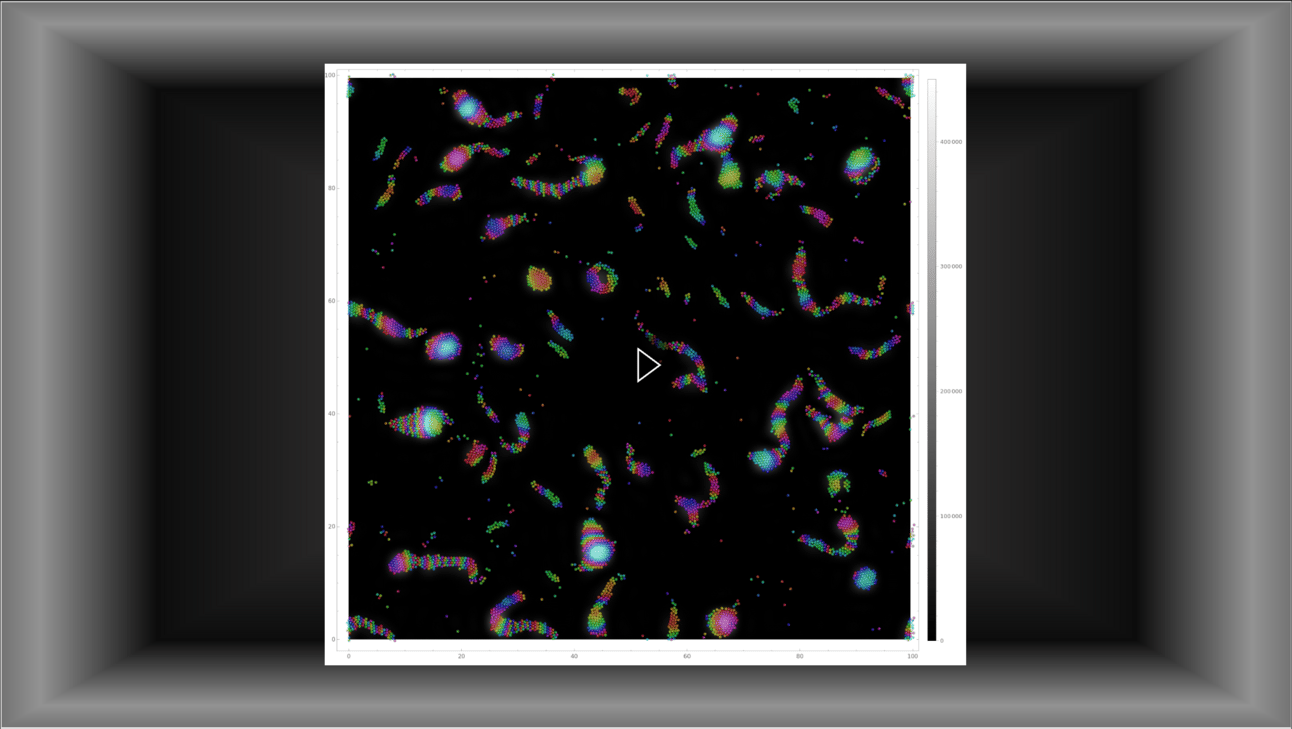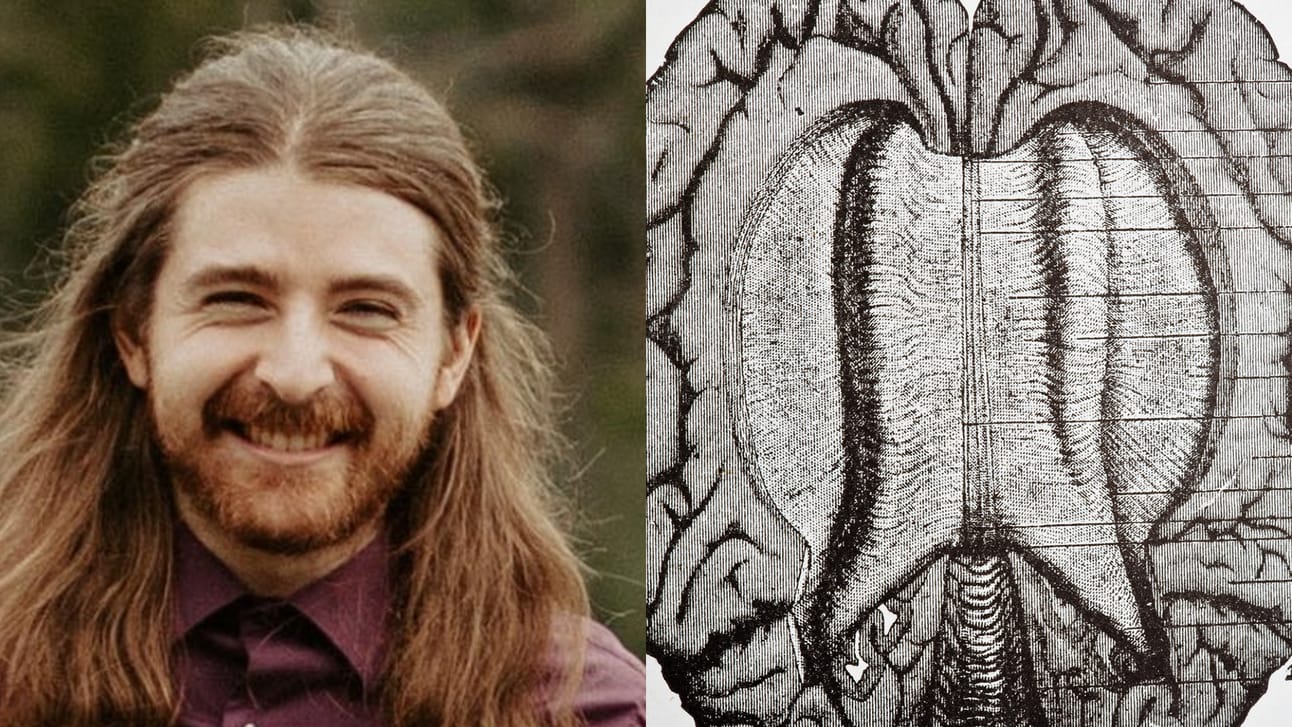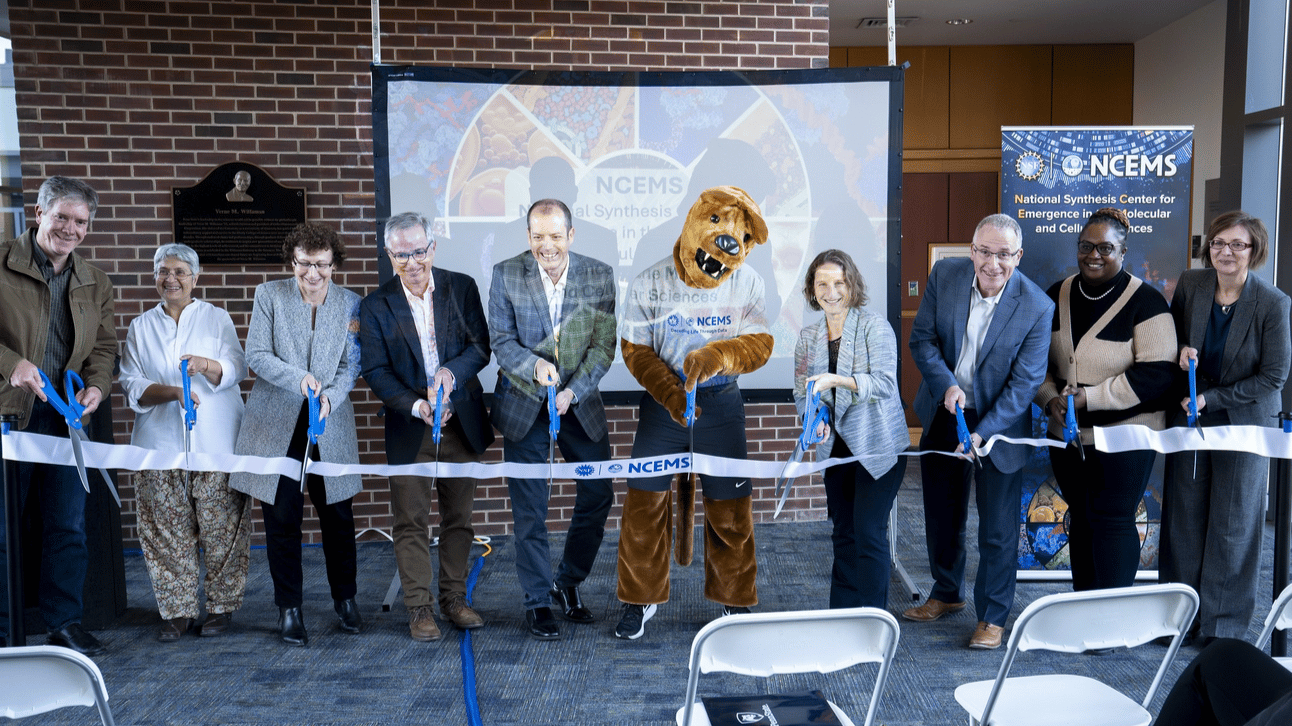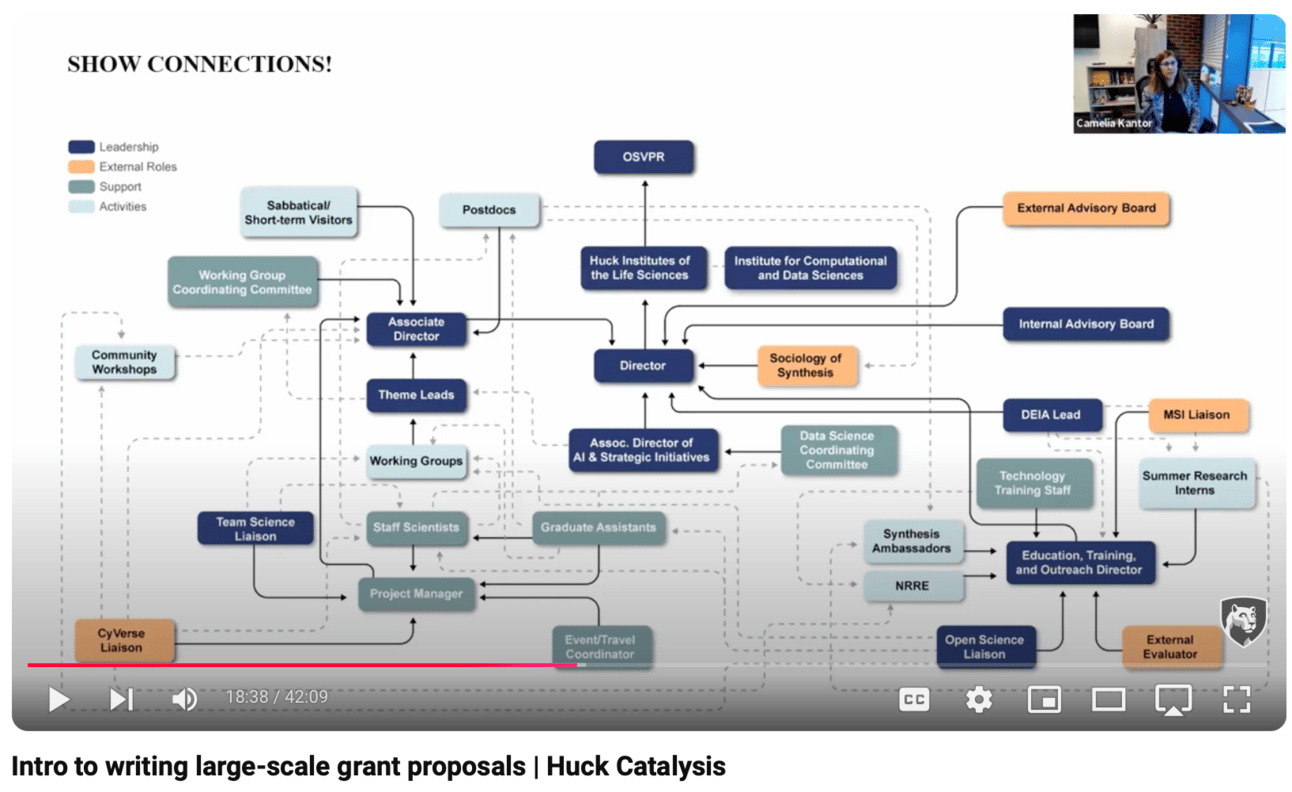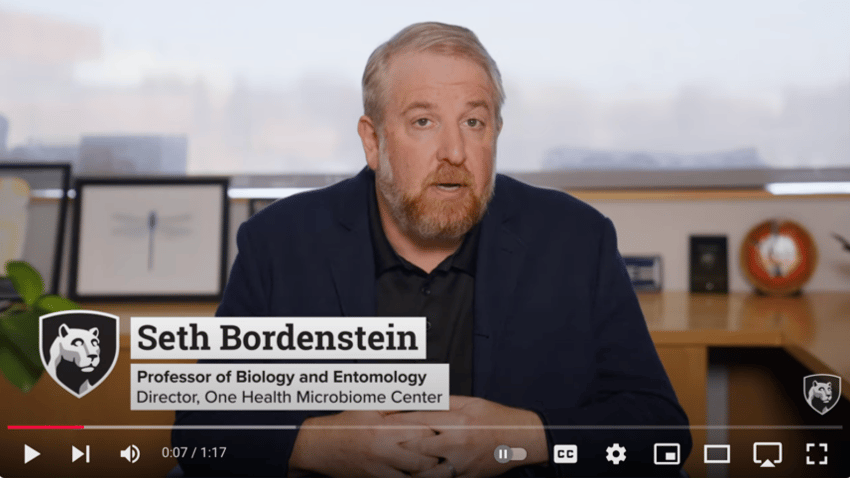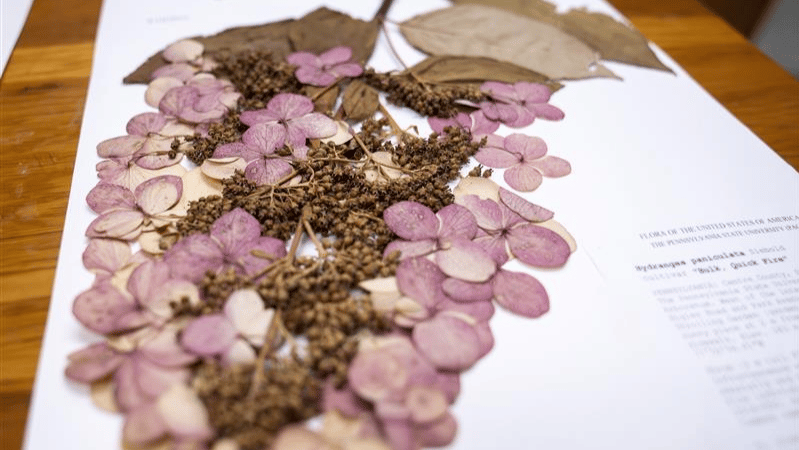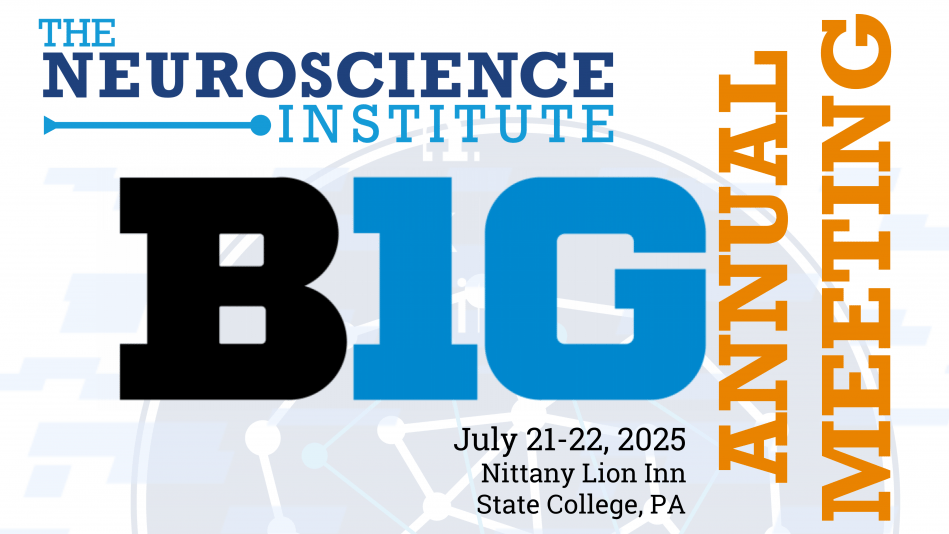December 2024. As the year winds down and we prepare for the holiday break, Huck leadership is pleased to share some exciting news. The NSF has awarded Penn State a $5.1M grant to fund the Skilled Training in Administration and Institutional Research (STAIR) program. This Huck-led effort, undertaken in partnership with the Strategic Interdisciplinary Research Office, Office of Research Protections, Office of Research Administration Services, Materials Research Institute, Applied Research Laboratory, and multiple Colleges, aims to transform the way research administration is conducted. Learn all about it in the feature story below. Happy Holidays.
★ Feature Story
Transforming Research Administration
The Huck Institutes of the Life Sciences at Penn State is proud to announce a transformative milestone in research administration. The National Science Foundation (NSF) has awarded $5.1 million to support the Skilled Training in Administration and Institutional Research (STAIR) program, a national initiative designed to revolutionize research administration across U.S. academic institutions. This award underscores Penn State’s commitment to fostering impactful interdisciplinary research and strengthening the national research ecosystem.
“I feel like this award validates all of the quality work we’ve done over the years to develop high-quality research administration content at Penn State. We’ve been developing and refining the ACES class for 19 years now, and we believe it compares favorably to any of the training programs offered by our peers. It’s even more exciting that we’ll now be able to leverage all this fine work to provide a service that should benefit minority-serving institutions and emerging research institutions across the country.”
The STAIR program is led by Principal Investigator Dr. Camelia Kantor, Associate Director for Strategic Initiatives at the Huck Institutes. Joining her are co-principal investigators:
Dr. Zoubeida Ounaies, Professor of Mechanical Engineering and Associate Director of the Materials Research Institute
Emily Martell, Managing Director at the Huck Institutes
Diane Rudy, Associate Director of Pre-Award Research Administration at the Strategic Interdisciplinary Research Office (SIRO)
This leadership team is supported by a diverse coalition of faculty and research administrators from multiple Penn State units and over 20 institutions nationwide, including Primarily Undergraduate Institutions (PUIs) and Minority Serving Institutions (MSIs).
Slice of Life
Igor S. Aronson, Huck Chair Professor of Biomedical Engineering, Chemistry and Mathematics and co-principal investigator Erwin Frey, professor of physics at Ludwin-Maximilians Universität in Munich, Germany, received a $1,058,000 grant from the John Templeton Foundation to advance research into the fascinating behaviors exhibited by microbots when they interact as a collective.
When we originally explored this model, we didn’t expect these complex behaviors to come from such simple elements. We anticipated something much simpler. This grant will enable a much deeper understanding of these phenomena while understanding the basic mechanisms or simple physical interactions leading to self-organized intelligent-like behavior.
Future discoveries in this realm could be potentially useful to accelerate tissue healing and regeneration, aid in drug delivery, and make advances in threat detection, Aronson said. Read the full Q&A with Aronson about this research here.
Accolades & Awards
Grayson Sipe, assistant professor of biology, was awarded the grant to study non-neuronal brain cells called astrocytes and their role in sensory processing. New Investigator grants empower early career scientists to address fundamental questions through novel approaches with the potential for generating transformative intellectual advances.
Next-Gen Science
Junyao Yuan, a graduate student in the Integrative and Biomedical Physiology program, and Julio Flores Cuadra, a graduate student in the Neuroscience program, have been awarded individual 2-year American Heart Association fellowships.
Both students are supported by an NIH-funded T32 interdisciplinary program from the National Institute of General Medical Sciences and administered by Huck. Titled Physiological Adaptations to Stress, the program provides interdisciplinary research training and educational experiences. With a strong focus on career development, the training prepares students for emerging academic and nonacademic careers in the biomedical sciences.
Chad Brunswick, a Ph.D candidate in the Huck Institutes’ intercollege graduate degree program in Neuroscience, has been awarded a prestigious National Research Service Award (NRSA) from the National Institute on Aging, one of the constituent institutes of the National Institutes of Health (NIH).
Brunswick works in the Kwapis Lab, researching the molecular and epigenetic mechanisms underlying long-term memory formation, storage, updating, and age-related memory impairments.
Lifting Off
Penn State and the U.S. National Science Foundation (NSF) celebrated the official launch of the U.S. National Science Foundation National Synthesis Center for Emergence in the Molecular and Cellular Sciences (NCEMS) with a ribbon cutting and ceremony at the Verne M. Willaman Gateway to the Life Sciences bridge in the Huck Institutes of the Life Sciences on Nov. 18. The event marked the physical dedication of the federally funded center, a collaboration between Huck, the Eberly College of Science, and the Institute for Computational and Data Sciences.
NCEMS is currently accepting proposals for the formation of working groups and applications for postdoctoral fellows.
Additionally, NCEMS will offer an 8-week Undergraduate Summer Internship Program in Summer 2025. Learn more here.
Huck Catalysis
In case you missed the Huck Catalysis webinar “Harnessing inter-institutional collaborations and interdisciplinary expertise to craft winning, large-scale proposals”, you can still get the content by viewing the video and downloading the slide deck.
Fresh Perspectives
Holobiont biology recognizes animals, plants, fungi and other hosts as dynamic assemblages of interacting and/or interdependent host and microbial cells, just as the host body is recognized as a dynamic assemblage of its own interacting cells that forge anatomical structures with specialized functions. Seth Bordenstein, Huck Endowed Chair in Microbiome Sciences, Professor of Biology and Entomology, and director of the One Health Microbiome Center, was among 22 scientists from across the globe to co-publish a paper in Science last month summarizing research in this emerging field.
Hidden Gem
There aren’t many things left on campus from the time of Evan Pugh, Penn State’s first president. If Pugh somehow returned today, perhaps the only items he might recognize would be the bones of Old Coaly, the beloved mule who helped haul the limestone blocks for the original Old Main, and his own collection of plant specimens: 3,000 of them, gathered and pressed or purchased by Pugh’s own hands and now kept safe in the Penn State Herbarium.
“The Penn State Herbarium is the third largest herbarium in Pennsylvania and the only significant, scientifically functioning herbarium in Central Pennsylvania,” said Curator Sarah Chamberlain.“ The PAC specializes in the flora of Pennsylvania with almost two-thirds of its holdings from the areas within the Commonwealth, mostly in the central to western part of the state. The PAC also houses an estimated 35,000 specimens from North America as well as smaller collections from Europe, Asia, and Latin America.”
Save-the-Date!
The fourth annual Big 10 Neuroscience Symposium will be held July 21-22, 2025 at the Nittany Lion Inn in State College, PA. the meeting will include presentations across five core topics (i.e., Psychopathology, Neurodevelopment & Neurodevelopmental Disorders, Neurological Disorders & Diseases, Neuroscience Methods, Neuromodulation & Other Neuro-Informed Interventions) and that align with the notion of promoting a healthy nervous system, across the lifespan. Learn more here.

The Huck Catalysis (Huck C) program coordinates university-wide interdisciplinary Life Sciences research development and collaboration activities with an emphasis on scholarship that crosses multiple academic units. Working with other units, Huck C provides support and programming to facilitate research partnerships, support strategic planning, identify funding opportunities, form interdisciplinary collaborations, and submit these proposals through SIRO.
The following are exceptionally innovative, recurring complex interdisciplinary research and education projects that require large-scale, long-term planning.
This funding opportunity supports applications from a highly integrated team of investigators addressing a single-focused, ambitious, and challenging project that cannot be addressed by individual R01 applications.
Due: May 28, 2025
Posted: Feb 3, 2023
Questions: [email protected]
AI Research Institutes will have as their primary focus the advancement of multidisciplinary, multi-stakeholder research on larger-scale, longer-time-horizon challenges in AI research than are supported in typical research grants.
Due: This funding opportunity recurs annually.
Questions: [email protected]
Sponsored by the Office of Naval Research, MURI efforts involve teams of researchers investigating high-priority topics and opportunities that intersect more than one traditional technical discipline. For many military problems this multidisciplinary approach serves to stimulate innovations, accelerate research progress and expedite transition of results into naval applications. MURI awards are made in research topics specified by the participating defense agencies each year that the program is in force. Specified topics change each year.
Due: This funding opportunity recurs annually.
Questions: [email protected]

Huck research attracts media attention from around the world. Here’s a few highlights from this month:
The first case of bird flu in a U.S. pig raises concerns. [NBC New York]
8-year-old’s discovery rewrites 100 years of insect and plant knowledge. [Brighter Side News]
Penn State researchers discover protein that might revolutionize industrial mining. [Interesting Engineering]
Freshwater fern could be a global food insecurity solution. [The Bradford Era]
What to know about bird flu risk in humans. [TIME]
Quick hack to reduce the calories in white rice. [Yahoo!]
Does Ozempic make you a better runner? [Women’s Health]



